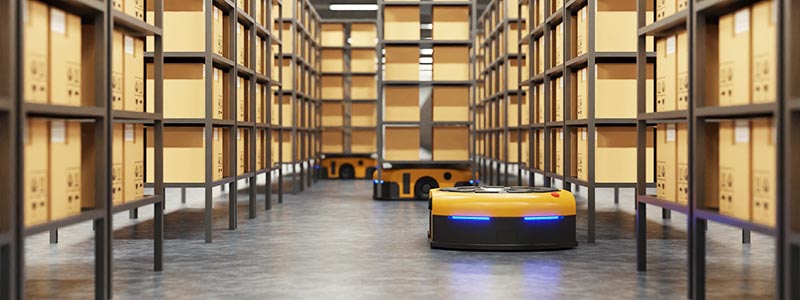“To be or not to be” is a challenge faced for the usage of Artificial Intelligence (AI) in the manufacturing industry. The overall implication of AI taking over the manual power is more bothersome to many companies, but the recent statistics of intelligent automation capabilities are head-turning, and therefore, just cannot be ignored: 85% usage of intelligent automation will be seen in Supply Chain Management by 2023.
Using robots and artificial intelligence in the warehouse is essential to stay competitive. Here are the benefits of using robots in the warehouse:
Reduces Manual Labor and Mental Strain
Robots can take over dangerous or time-consuming work, helping warehouse workers stay safe while performing the work in coordination with the robots. Robots also help save the time and effort of the workers spent in scanning, picking, packing, and counting inventory.
Also, it can be a very strenuous activity for the warehouse workers to keep on moving one rack to the other fetching customer orders. But autonomous mobile robots remove such physical tasks from workers’ lives and help workers focus more on other order fulfillment tasks requiring human intervention.
Improves the Accuracy and Efficiency of the Warehouse
Artificial Intelligence helps reduce human error and improves the customer experience which is the key to success for any business. Since robots are customizable and programmed for a specific purpose, there is little chance of them working incorrectly. Robots are less prone to errors and eliminate wasting time and effort in redoing an incorrect task.
Accuracy in tasks, like product scanning, picking, storing, and transporting the products, affects the overall performance of the warehouse in a positive manner. Warehouse robots work with precision and automate the most mundane and laborious tasks, hence, saving time as well.
Reduces Warehouse Costs
“As per U.S. Census Bureau data, an average warehouse worker spends almost seven weeks per year in unnecessary motion within the warehouse. The costs of such futile activity cost more than $ 4.3 billion to the industry in annual revenue.” ₁
Also, robots perform dangerous tasks efficiently in the warehouse, resulting in reduced costs spent on worker’s compensation for safety issues. There are fewer chances of workers getting injured since robots are performing the tasks instead. The number of workers required in the warehouse also decreases as robots fulfill most tasks more accurately, creating less wastage as well in the warehouse.
Efficient Picking Capabilities
One of the foremost usages of a robotic arm was to move the materials from one place to the other twelve feet away. But with the advancement in technology, the robotic arm has now been developed into an autonomous mobile robot that can travel throughout the warehouse and pick items automatically.
Companies like Liftians have introduced their powerful mobile robotic picking solutions in the market. This adds up to the efficiency of the warehouse with limited human resources. These machines are programmed to travel the established routes and they typically carry carts in which the products can be stored and transported to the workers.
Conclusion:
Hope the above points have helped you in understanding how robots are changing the world of the supply chain within warehouses. This is just scratching the surface; robots will prove to be much more useful and advanced as technology advances. It’s time to move on with this modern technological world.

